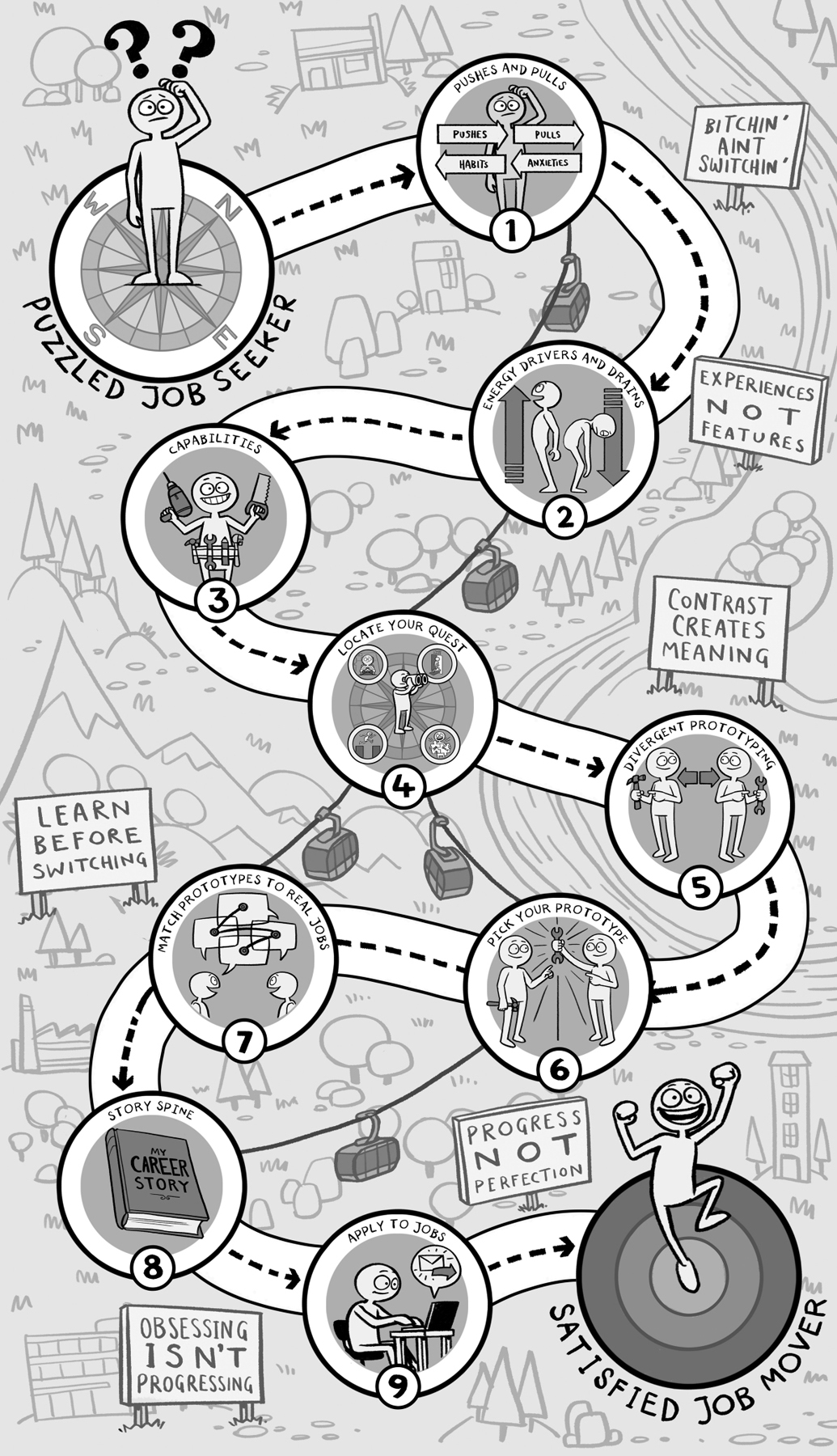Job Moves offers a new approach to career development, emphasizing that individuals should “hire” their jobs, rather than the other way around. It is based on the idea that people seek jobs to make progress in their lives, and a successful job move involves both the organization and the individual choosing each other.
The book provides a nine-step processto help individuals make better career moves, focusing on self-discovery and aligning personal goals with job opportunities.

-
Step 1: Identify What Jump-Started Your Latest Quest. This step involves understanding the reasons behind your most recent job change by examining the pushes and pulls that influenced your decision.
-
Step 2: Know What You Want Driving Your Energy. This step focuses on identifying what energizes and drains you at work. You are asked to rotate your resume and create a timeline table to summarize your career, noting which activities gave you energy and which drained you in each role.
-
Step 3: Catalog Your Capabilities. In this step, you compile your skills, credentials, and experiences, assessing them as career assets and liabilities on a career balance sheet. The book highlights that capabilities differ from aptitudes and strengths, which are more static.
-
Step 4: Name Your Quest. This step combines insights from the previous steps, as well as using the online assessment tool at jobmoves.com.
- This assessment helps you confirm which of the four quests for progress you are currently on: Get Out, Regain Control, Regain Alignment, or Take the Next Step.
-
Step 5: Prototype and Design Your Future. In this step, you create multiple job prototypes. This involves divergent thinking to imagine a range of possibilities for your next career move. The goal is to learn before switching whether a job that looks good on paper is the right fit.
-
Step 6: Converge on Your Path. This step involves convergent thinking to narrow down the prototypes based on how they align with your energy drivers and assets from prior steps. You will rank your prototypes according to your prioritized energy drivers and assets. This helps you determine which possibilities make the most sense at this stage of your career.
-
Step 7: Embrace Trade-offs in the Job Market. This step involves checking your prototypes against real job opportunities and making informed decisions about trade-offs. You will need to unpack real job postings to see how they match with what matters to you.
-
Step 8: Craft Your Career Story. This step involves creating a compelling narrative about your career journey. Use the story spine idea. This narrative will help clarify your thinking and communicate your goals to potential employers. This step also helps you to connect your past experiences to your present quest for progress.
-
Step 9: Apply for Jobs You’d Like to Hire. This step focuses on the practical aspects of job applications, using your personal story to get hired. The book encourages using your career narrative and story spine in job interviews and also provides tips for creating a one-page personal cheat sheet that details how you work best and what value you bring to a job.
Footnotes
-
This page contains affiliate links. If you purchase through these links, I may earn a small commission at no additional cost to you. ↩
